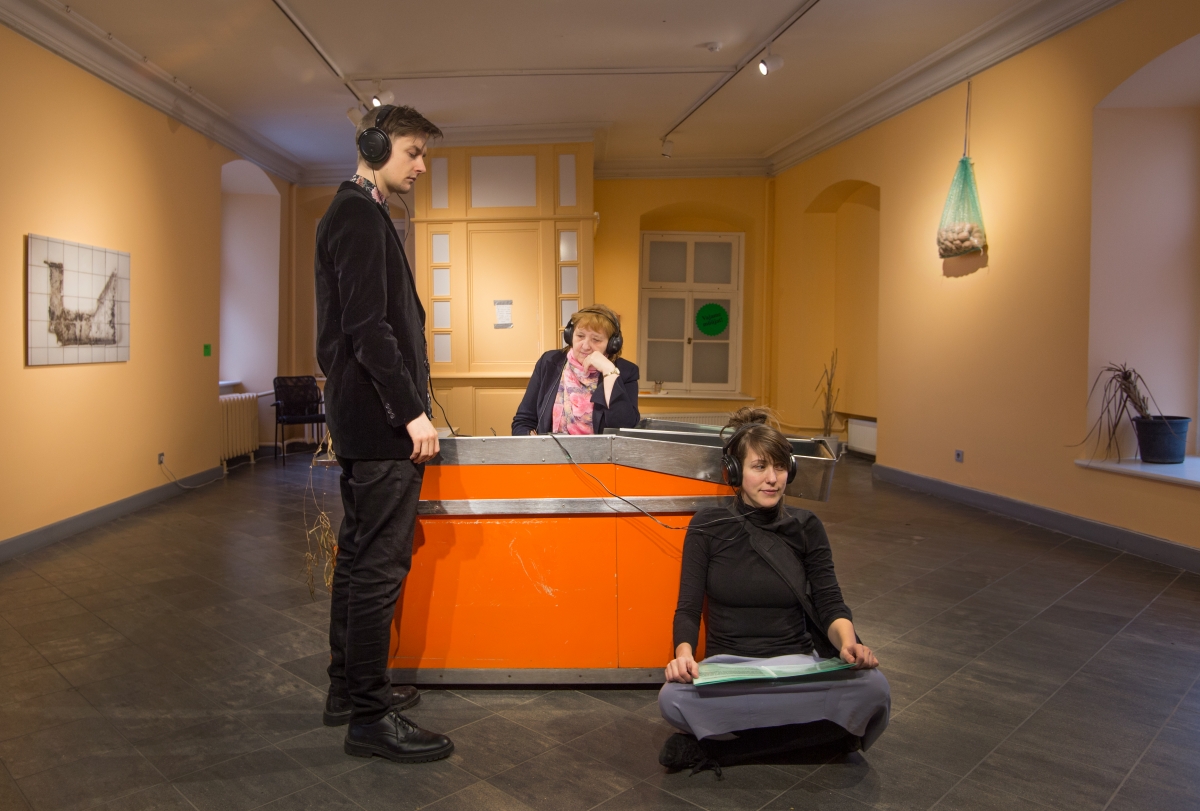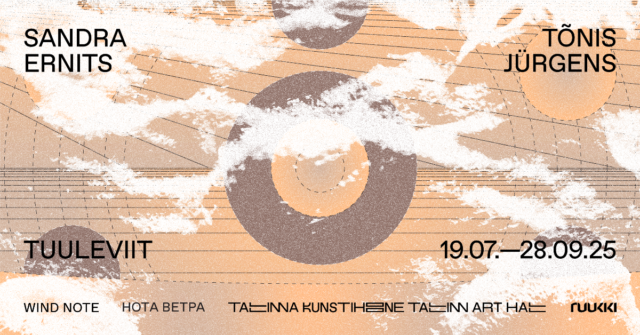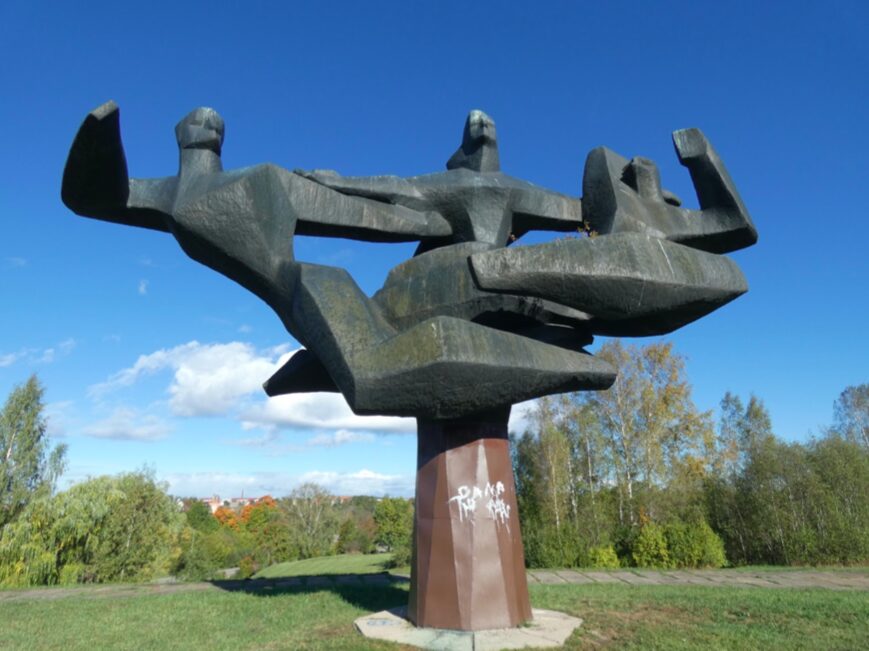Last year, British curator Ralph Rugoff used the popular yet fictional Chinese proverb “May You Live in Interesting Times” as the title of his curated edition of the 58th Venice Biennale exhibition. He chose it in order to comment on the present world’s political and social climate, in particular the uncertainty and confusion caused by both fake news and populist propaganda against the news media. Almost one year later after March 11th when the World Health Organisation (W.H.O) declared COVID-19 to be a global pandemic, this proverb would now seem to have turned into an even darker curse much like a prediction. Within a few days of the W.H.O’s announcement, the governments of different countries released quarantine-related restrictions which led to most public events being cancelled. Following this, most educational and cultural institutions began closing their doors, many of whom had only just opened exhibitions within a day or two, leaving both cultural agents and the general public in great uncertainty, not just about their health but also their work and finances.
Exhibitions are now enduring their own versions of imprisonment sitting behind locked doors of museums, galleries and Kunsthalles waiting to be resumed, moved, cancelled or postponed. One of these is Estonian artist Flo Kasearu’s solo show “Endangered Species” which managed to run in Tartu Art Museum’s first floor exhibition hall for two weeks before it closed to the public. Now the only indication of Flo’s exhibition that can be seen by a few passersby is the outside poster and stickers in the windows displaying a fake job advertisement saying “Shop assistant needed!” Considering how many people have been laid off recently with no guarantees of ever getting their jobs back, Flo’s advert appears to be pretty enticing. Even when the show was still open there were several incidents of people coming in to inquire about the museum’s potential “job” on offer.
Of course Flo could never have predicted this happening, but the way her show corresponds to the present anxiousness of society certainly underlines her strong social nerve and proves that the lives of some projects have the potential to exceed their original topical frames. Flo has a particular handwriting that is present also in this project. It is an urge to work in series as well as engage in socially important and critical topics which she often performs using her private experiences and familiar spaces. She definitely goes by the slogan “personal is political” which makes us look at her as someone curious and a reliable source of information.
The topic of Flo’s exhibition is the quitting of a small business, in this case one that has been running for 30 years, to do something more satisfying with ones life. It suggests a timeline of changes starting from adventures mode of “all is possible” 90’s through to the hardship of the economic crises, then finally giving up in 2020. The protagonist of the exhibition is a little grocery shop which was run by Flo’s mother in Pärnu and at some point became a working place for Flo being the shop owner’s daughter. The show is made using colour tones and furniture from her mother’s original shop which is complimented by ceramic-tiled flooring similar to shop’s floors that museums happen to have. The project is not a reconstruction of the shop, but more a monument dedicated to her mother’s business.
So what is really behind those closed museum doors? Near the entrance under the staircase one is greeted by a CRT TV on a plinth showing a black and white video called “Best Before is Over” (2010). The topic of unemployment first appears in Flo’s work “Unemployment will tear us apart” (2010) made some ten years ago when she created twelve spray-painted stencils on cardboard depicting people in different professions lacking the necessary instruments needed to perform their jobs. Though this series was made as a commentary on the 2008 global economic crises, they feel prevalent again under the growing circumstances of this new coronavirus crisis. “Best Before is Over” is a cut-out photocopy puppet-show video Flo made around the same time as she made “Unemployment will tear us apart” to give another ironic commentary on the economic crisis and its consequences in Estonia and how a small shopkeeper was dealing with it. The visual representation of Flo’s mother then, and now in her new show, is Estonian actress Marika Vaarik.
Before we are even able to properly observe the space we are greeted by Marika the “shopkeeper” looking down at us from a freely-hanging vertical flat screen repeating the same sentence over and over: “Vabandust, aga meie iseloomud ei sobi” (Sorry, but our characters don’t match). In times when firing except if the reason is really serious is or now we have to say was a long and problematic process, this becomes a standard phrase used to get rid of somebody. So, before we can even explore further, we get a feeling of being already fired by the “shopkeeper”, a lady who looks like an old school shop assistant in a blue and green coloured apron, or maybe we are just learning that other people are being fired.
The exhibition rooms have been coloured in different vibrant colours, like mixes of blue-green and yellow-orange and pink, reminiscent of the vibes of a kindergarten school or a sweet shop. Every shop item, including functional objects, has been transformed into the installation gaining new symbolic meaning. The exhibition text on the wall is slightly blurry as if the print failed or has a bad quality. My guess is the effect has been made deliberately both to underline the DIY methods many small entrepreneurs have to invent to survive as well as the underlying topic of uncertainty that ghosts through the exhibition. There are some cute elements too, like metal shelves which were probably used to store packs of chips before, now functioning as holders for the exhibition text and plan, or candy containers proudly resting as art objects on the wall shelves.
The first room has two more prominent elements that Flo brought from her mother’s shop: the first is a sink in the corner of the room titled “Introduced in Translation” (2020); the second is a cold showcase titled “Re-training” (2020). The sink ironically represents certain European Union regulations that put demands on shops to have certain items, often rendering them unusable anyway. This sheds light on the constant obstacles that small entrepreneurs have to deal with. Of course looking at the sink again, what comes to my mind right now is the overwhelming amount of advertisements and memes dedicated to washing one’s hands as a precautionary measure. Altogether, the sink might not be an art object that is as famous as the urinal, but it has been used quite a lot as a symbolic representation for cleanliness and not just an obligatory physical one. For example, several years ago in the same museum, Estonian artist Jevgeni Zolotko had an exhibition titled “Lukewar. Prologue” (2013/14) with three sinks whose symbolism represented very strong biblical meanings.
One of the biggest objects in the show is the cold showcase which Flo has turned into a fountain. Visually, it looks empty, like a cold showcase with fake grape décor that is usually put in cheese vitrines. Here, the fridge looks like it is thawing with the water leaking through its gaps. Thawing is a theme reappearing in other works in the show like Flo’s eye-catching piece with melted ice cream “Thaw” (2020) or in the only video work “Dream of a Soft Landing” (2020) where a woman is seen cleaning a shop. Thaw metaphorically is meant to be an indicator of change, but in Flo’s interpretation it becomes a beautiful homage to entropy with only water left to wash everything away.
Curiously, the title of the piece using the cold showcase has the word “retraining” in it, as if Flo is like some sort of animal trainer who can retrain vitrines to be something else. If we think about the many cases in which artists work with ready-mades, this is what actually happens. Talking about retraining animals, the next room has a wall display of the shop’s many aprons all hung like a line of tiger skins. The effect is mesmerising: all the old school aprons have transformed into creatures, maybe even ghosts, or a shamanistic vision. Meanwhile, on the opposite wall sits the latest edition of Flo’s fear series which started in 2013 with the drawings “Fears of House Owner”, on permanent display in the artist’s House Museum. The series continued with “Fears of Museum Director” (2014-2016) which was exhibited in Tartu Art Museum in the show “Is This the Museum We Wanted” (2014). Now framed in the same plastic frames that are used for product titles and prices in the shop, one can see her newest additions “Corner shop fears” (2020). These simple drawings play out different disaster scenarios for the shop – from being overtaken by a bigger supermarket chain to something pettier like vandalism. Usually her drawings are pretty witty and ironic and they mostly hold to scenarios that could actually happen. None of them predicted the pandemic though, but I am sure it will be used by her in the near future.
The next room’s central stage is taken by a store cashier accompanied by audio recordings on earphones. The work titled “Gossip” (2020) plays an interview made with Flo’s mother as a woman owning a small business in Estonia (with the text dramatised by playwright Laur Kaunissaare). Flo’s mother has been inspirational material for Flo several times, as she also runs a Women’s shelter. What I find charming about her mother’s story are her honest feelings she reveals about being a woman in business which has historically been part of a man’s world, and how closing her shop makes her question herself. Like a mantra, we hear her repeating “What am I waiting for?” Later, as if answering herself, she says “I want to land as a person and not as an entrepreneur”.
The exhibition has the overall charm of an abandoned amusement park as if looking at some bigger carousels now overgrown and leaking with water. Throughout the ghostly rooms one can encounter some dead plants standing like leftovers, another of Flo’s continued projects called “Collection of Dead Plants” (2016-ongoing). This social project unites people by inviting them to give away their failed plants, at the same time becoming a weird reminder of time. Time is definitely present in her exhibition in all possible ways starting from a clock that is exhibited in the store cashier’s room, dead plants, a photo image of a dark stained floor in the shop titled “Cash Balance” (2020) where presumably for many years a heavy cashier must have stood, and artificial sculptures of colourful ice cream melting on their sticks.
Spring being the symbol of change has arrived, and to properly prepare for that one needs to do some infamous spring cleaning. To get in the mood for that, one would have only needed to enter the final room of Flo’s exhibition. Before entering, I could already hear the sad repetitive sound of a violin being played and the strong smell of plastic strips covering the doors through my nostrils. The violin sounds were coming from a video where a young boy (Flo’s son) sits practicing with his violin in the shop, now half empty. The boy seems to be performing an “avante gardish” soundtrack for the video, perhaps the swan song of the shop. This video helps sum up the exhibition by giving it a beginning and an end point at the same time. Here, you can see all the original items of the shop presented in the video and the exhibition and you can see the wall colours too. But everything is cleaned up leaving only the uncertainty. What is this new start, and will it bring a soft landing? The same kind of questions are travelling around the news and social media at the moment while both give positive and negative scenario outcomes for the foreseeable future and how COVID-19 will all change our lives.
The exhibition is not overbearing, or stuffed with many things and information. It is a beautiful map of somebody’s experience, a shopkeeper’s legacy represented by artefacts and ideas about possible or impossible future choices. It is a wonderfully executed show which in time will not only serve as an important exhibition but also as a footprint of peoples’ history.





























